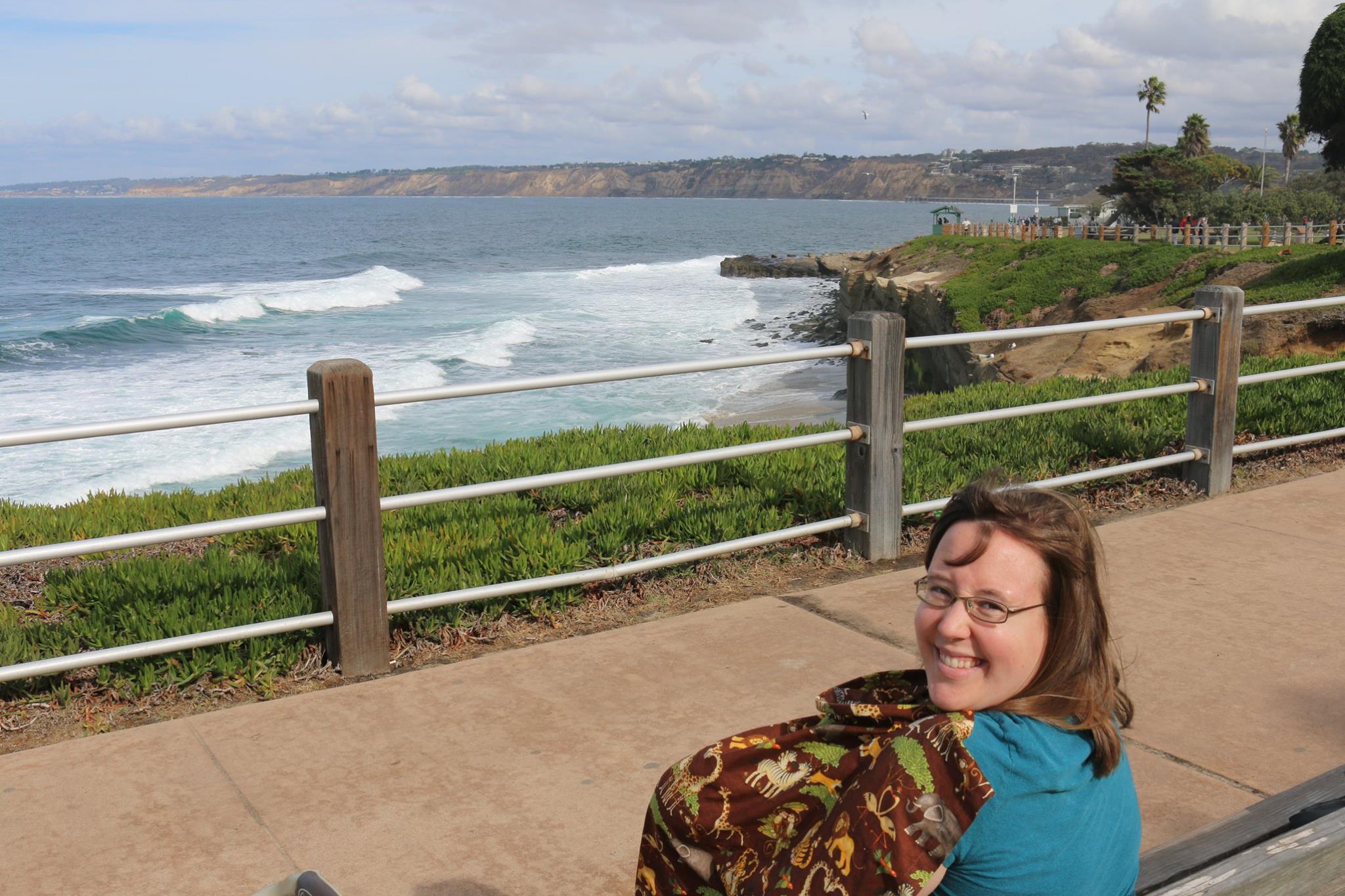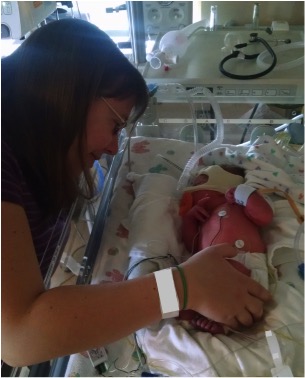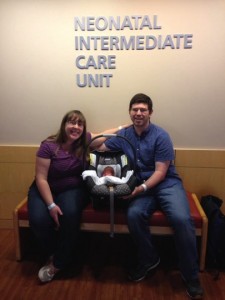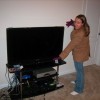Breastfeeding Ain’t Free
Before I became a mother, I had the misconception that breastfeeding an infant was free. I mean, I knew it wasn’t completely free because the calories the baby eats have to come from somewhere, but I thought the costs beyond the extra food that the mother was eating would be negligible. Breastfeeding was some magical minimalist pursuit where all you need is mother and baby.
While there may be some unicorn mother-and-nursling pair out there for whom that is true, it is definitely not for me and DPR and I don’t think it is for the vast majority of Western women. In the small picture, I’ve been shocked by the number of products we’ve had to buy in order to properly access this ‘free’ food. In the big picture, breastfeeding is an enormous investment of time and energy – some refer to it as a full-time job in and of itself.
Products
While breastfeeding products are not a ‘need’ in the literal sense, there are many that make breastfeeding a whole lot easier. Thankfully, these items are generally only a one-time or short-term cost.
Accessories
In DPR’s first few months, my nursing pillow was practically an extra appendage. I chose a My Brest Friend because it stays firmly in place with a strap and is adjustable. (I’ve used a Boppy a few times and I never felt DPR was as secure – I had to use a lot more arm support.) More recently, I’ve transitioned to almost exclusively side-lying nursing in bed, but neither DPR nor I was ready for that position until she was a few months old. The nursing pillow was a ‘must have’ for me in the early days, and I still use it when I want to nurse on the couch.
An accessory that I’ve gotten a lot of mileage out of is a nursing cover. On the spectrum of mothers who would never nurse in public to mothers who bare what they need to bare to nurse, I fall in the middle. I do nurse (and pump) in public and in friends’ homes, but I typically use a nursing cover. I’m more comfortable with this option and I assume the people around me are as well. Unfortunately, the not-so-comfortable person is DPR, who has started fighting the cover on occasion.
We received my nursing pillow as a gift, but it retails for $30.48. The nursing cover I use most was a hand-me-down, but a similar nursing cover retails for $9.95.
Clothing
If you wanted to, you could easily justify a shopping spree for nursing clothing. I am very glad that I bought a few nursing bras and tank tops. Some nursing mothers wear their regular tops that they just pull up or aside when nursing, but others like tops with hidden openings that are designed specifically for subtle nursing.
I’ve spent $116.48 on nursing bras and tanks. I also received a nursing bra as a gift (retails for $19.95), and all of my nursing clothing is hand-me-down.
Nipple Care
While the breastfeeding book I read told me over and over that breastfeeding is not supposed to be painful, my nipples did go through a ‘toughening up’ phase that my pediatrician and lactation consultant considered normal. In that period, nipple shields, hydrogels, and nipple creams (some over-the-counter, one prescription) helped quite a bit as we nursed (or pumped) through that phase.
We received nipple shields for free (well, probably covered by insurance) in the hospital. I was given a box of hydrogels, which I loved so much that I spent $7.37 on another box. I spent $9.67 on a jar of nipple butter and paid $15.76 out of pocket for prescription nipple cream from a compounding pharmacy.
Pumps, Etc.
Guess what? Breastfeeding moms tend to bottle-feed as well! If you ever want a break from nursing, whether to leave your baby, sleep, or give your nipples a rest, you are supposed to express milk and feed that to your baby (if you are exclusively breastfeeding).
Thanks to Obamacare, breast pumps are now covered to some degree by all compliant health insurance policies. However, you might have to pay part of the cost to get the exact pump you want if it’s a more expensive one. The pump accessory that is indispensible in my opinion is a hands-free pumping bra. I also use lanolin on the breast shields to create a better seal. Of course, once you pump the milk you have to store it somehow – in bottles in your refrigerator (or cooler when on the go) or bags in your freezer.
Then, to actually get the pumped milk into your baby, you have to have bottles, and that’s a whole other set of expenses that I won’t go into here.
Our health insurance paid fully for a double electric pump, the Medela Pump In Style. It wasn’t the brand I wanted, but I’ve been happy with it. We stayed in the Medela family of products for compatibility reasons, so we have a bunch of storage bottles ($9.39 for a six-pack – though I wouldn’t buy any separately now that I know that other Medela products tend to come with bottles). I also bought a manual pump, the Medela Harmony, to use while traveling for $26.49, along with an insulated cooler and ice pack (and bottles) for $22.20 and charging accessories for $48.97. My double electric pump came with a hands-free nursing bra, but I had already received one as a gift for use with my hospital grade pump while we were in the NICU (retails for $30.56), and it is nice to have two. We’ve purchase a handful of tubes of lanolin as well, which are $8.92 each on Amazon.
Calories and Supplements
We’ve now come to the ongoing costs associated with breastfeeding. Breastmilk calories have to come from somewhere. A lot of nursing mothers report that they are ravenously hungry and eating much more than usual, but even if your baby is nursing from your body fat, the fat was created from food you consumed at some point in the past. So nothing is free in this area, though it is difficult to quantify.
While less than 5% of mothers have a truly low milk supply, a lot of mothers are insecure about their supply and, especially in the early days, may consume special foods, drinks, and supplements that are supposed to increase supply or help with let-down. I happen to be in the lucky 5% (probably due to DPR’s prematurity and NICU stay), so I have been taking fenugreek continuously since a few days after DPR was born, and I’ve also taken two prescription medications.
We’ve bought several bottles of fenugreek from a few sources, but most recently have been buying it from Amazon ($6.92 per bottle, which lasts 20 days). My prescription medication was covered by insurance so we only spent $6.91 out of pocket. The medication I’m currently on cannot be prescribed in the US so it’s not covered by insurance, and we’re paying approximately $75 per month for my current dosage.
Lactation Consultants
Before DPR was born, I was talking with a family member (from an older generation) about my commitment to breastfeeding. She was talking about supplementing with formula if I ran into any issues early on. When I told her that if I ran into any issues I’d go back to the hospital to see a lactation consultant, she scoffed a bit – but that’s exactly how things have turned out.
While DPR was in the NICU I had access to a team of lactation consultants, and I probably saw one just about every day. I’ve also see one lactation consultant fairly regularly as an outpatient since DPR’s discharge. Eventually, my lactation consultant steered me toward the hospital drop-in breastfeeding support group to check how well DPR is nursing instead of making individual appointments. Even with the high amount of breastfeeding support I’ve received from Kyle, our other family members, our pediatrician, and La Leche League, I can truly say that I wouldn’t still be breastfeeding if I didn’t have access to my lactation consultant as an outpatient. She has played an essential role in this journey.
Our health insurance covers appointments with lactation consultants fully, thank goodness. However, I pay $15 out of pocket to attend the hospital lactation support group. (What sense does that make, right? More out of pocket money for less individual attention.)
Time
The most valuable resource I or any mother commit to breastfeeding (or bottle feeding) is the time. And it is a lot of time – again, especially in the early days when babies are slow eaters with little stomachs. I’m sure there are many mothers who can stick with breastfeeding through the start-up costs and don’t mind spending a little more on food but who absolutely cannot afford the lost wages associated with the time commitment of breastfeeding. I’m incredibly fortunate that I can work from home on my own terms (nearly all of the time), and that our family can take the income hit from my hours of lost work productivity.
For our family, breastfeeding is more than ‘not free’ – it’s priceless. We’ve spent a good bit of money and we’ve sacrificed an unquantifiable amount of income to support DPR’s and my breastfeeding relationship. But when DPR and I snuggle together and I listen to her adorable snuffles and grunts as she eats the best food I can make for her… I believe it’s worth it.
What costs associated with breastfeeding surprised you most? How has Obamacare changed the out-of-pocket costs of nursing for you? Was your job supportive of breastfeeding/pumping?
Filed under: family, food · Tags: breastfeeding


 Five High-Value Baby Products for Your Shower Registry
Five High-Value Baby Products for Your Shower Registry We Didn’t Plan for the NICU
We Didn’t Plan for the NICU May, June, and July 2016 Budget Report
May, June, and July 2016 Budget Report How We Watch All the TV We Want for Free (Including Sports)
How We Watch All the TV We Want for Free (Including Sports)


Totally agree! I also need to take supplements to maintain my supply and take goats rue in addition to fenugreek, and unfortunately the goats rue is pretty expensive. Who was able to write prescriptions for you – your obgyn? I have often thought of asking to switch to a prescription to see if that works better for me but I’m never sure who to ask and I believe they would need to do some tests to rule out factors like thyroid issues prior to giving a galactogogue prescription. The hydrogels saved me with L, and for hands free pumping, I cut holes in an old sports bra because I didn’t want to spend the money for one of the pre-made ones. I pumped from day 1 and continued to pump for and nurse L until about 3 months pregnant with O and I just couldn’t stand it anymore, so I had to buy lots of replacement pump parts as well. Formula would have been cheaper but that time nursing with both kiddos has been priceless as you say!
My prescription was written by an NP at the lactation support center at DPR’s NICU hospital. I did get my thyroid tested through my midwives to try to figure out what was going wrong (not that, apparently). I think the prescription came easily because of the NICU situation. My lactation consultant told me how to get my non-prescribed prescription medication, but I definitely wouldn’t have done it without multiple LCs and our pediatrician (and several friends) telling me about it/hinting that I should get it (none would outright tell me to).
I’ve heard the cut sports bra solution for hands-free pumping – I’m glad it worked for you!
I’ve had to buy a few new membranes for my pump as well. I’m not using it a ton these days so I hope the parts will last a while!
I’m a little scared to do the calculation on whether formula would actually be cheaper. We already supplement with a half-dozen ounces of formula a day so we buy it every so often.
How were you able to obtain a non-prescribed prescription? Do you find it works well for you? My LC has never brought up prescriptions but instead has recommended more and different supplements, but I don’t want to just take 3-4 herbs at max doseages if there may be a simple and more effective solution! My LC was also instrumental in my continuing to breastfeed L, so I’m glad yours is so great for you too!
We had to buy pumps out of pocket ($350!), but didn’t really have many of the costs you list. My zolowear sling had a long tail that doubled as a coverup. I got a boppy as a present and only used it for a couple weeks with DC1. I found that pumping more was the best solution to increasing my supply, though with DC1 I had to pump extra on the weekends (when there was no bottle feeding) to get enough milk for the week. I needed a small oversupply to get enough milk via pumping. (I also ate oatmeal, but that probably saved money on breakfast rather than cost it.)
With DC1 I did use those cool gel things for the first few weeks when my breasts were sore. I got some in anticipation of DC2, but never opened them and ended up passing them along to someone who could use them.
We did have to buy lots of lansinoh bags to freeze the milk, dr. brown bottles for feeding (because otherwise DC1 would choke), and lots of those stupid white flappy membranes for the pump.
I didn’t really have time costs because I could pump in my office at break times and having a forced break may have improved my productivity.
I loved the way I could eat anything and not gain weight or have PCOS symptoms.
It sounds like breastfeeding and pumping went fairly smoothly for you! And you didn’t have to use many different products – though ouch on having to pay for the breast pump up front. I also switched to eating oatmeal daily and think it’s reduced our grocery costs a little. 🙂
Surprised me too!!! I also had a premie baby and a NICU stay and low supply. And then kiddo wouldn’t gain weight properly and I was ordered by her pediatrician and a lactation consultant to supplement with formula.
My insurance did not cover lactation consultants, so I paid out of pocket for one consult. The kind of support you got sounds totally amazing. I did everything the LC said–took supplements, rented a hospital grade pump and pumped after every feeding. I managed to get to the point where I was able to feed the kiddo exclusively with breastmilk, but started to have to supplement again when she started day care, because the caregivers wanted so much milk every day. No matter how many pumping sessions I added, I could no longer keep up. But I kept breastfeeding for a year, and so kept renting the expensive pump, plus then needed the cooler, ice pack, pumping bra and lots of storage bottles. It was not cheap.
That is a lot! Good for you for keeping up the effort for so long! That’s great that you even got to the point that you could exclusively breastfeed for some time.
I rented a hospital grade pump for 1 month I think but then went with my commercial one, which isn’t as good but is certainly more portable.
I can totally see how going back to supplementing would happen with day care. It does seem that they ask to have a lot of milk on hand each day. I hope they did’t waste a drop! We had to throw out a few ounces that I pumped during a trip recently (of ~ 40 oz) and that was a small heartbreak.